
Optimization of coconut protein deamidation using protein-glutaminase and its effect on solubility, emulsification, and foaming properties of the proteins (2018)
Title : Optimization of coconut protein deamidation using protein-glutaminase and its effect on solubility, emulsification, and foaming properties of the proteins
Researcher : Kunarayakul, S., Thaiphanit, S., Anprung, P., Suppavorasatit, I.
Department : ภาควิชาเทคโนโลยีการอาหาร คณะวิทยาศาสตร์ มหาวิทยาลัยสยาม
E-mail : somruedee.tha@siam.edu
ฐานข้อมูลงานวิจัย มหาวิทยาลัยสยาม: –
Link to article: Food Hydrocolloids, 2018, 79, pp. 197–207. https://doi.org/10.1016/j.foodhyd.2017.12.031
Journal : Food Hydrocolloids / in Scopus
Bibliography : Kunarayakul, S., Thaiphanit, S., Anprung, P., & Suppavorasatit, I. (2018). Optimization of coconut protein deamidation using protein-glutaminase and its effect on solubility, emulsification, and foaming properties of the proteins. Food Hydrocolloids, 79, 197–207. https://doi.org/10.1016/j.foodhyd.2017.12.031
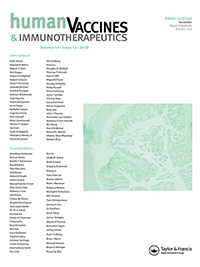
Persistence of hepatitis B immune memory until 9-10 years of age following hepatitis B vaccination at birth and DTaP-IPV-HB-PRP∼T vaccination at 2, 4 and 6 months (2018)
Title : Persistence of hepatitis B immune memory until 9-10 years of age following hepatitis B vaccination at birth and DTaP-IPV-HB-PRP∼T vaccination at 2, 4 and 6 months
Researcher : Clin.Prof.Suwat Benjaponpitak
Department : Faculty of Medicine, Siam University, Bangkok, Thailand
E-mail : med@siam.edu
Abstract : Objective: To evaluate the long-term persistence of anti-hepatitis B surface (HBs) antibodies and the response to a HB challenge re-vaccination in children who had received a primary series of DTaP-IPV-HB-PRP∼T (Hexaxim™) or DTaP-IPV-HB/PRP∼T (Infanrix hexa™).
Methods: Two cohorts of participants who had previously received HB vaccine at birth followed by either DTaP-IPV-HB-PRP∼T or DTaP-IPV-HB/PRP∼T co-administered with PCV7 at 2, 4, 6 months of age in a randomized, Phase III, observer-blind study in Thailand, were followed up for anti-HBs antibodies (geometric mean concentrations [GMCs] and seroprotection [SP] rate [% of participants with a titer ≥10 mIU/mL]) at 12-18 months of age and 9-10 years of age. A monovalent HB challenge re-vaccination was administered at 9-10 years of age and the anamnestic response was evaluated.
Results: Anti-HBs GMCs and SP rates in the DTaP-IPV-HB-PRP∼T and DTaP-IPV-HB/PRP∼T groups were high and similar post-primary vaccination series (2477 mIU/mL and 99.5% and 2442 mIU/mL and 99.5%, respectively) and declined to a similar extent in each group at 12-18 months (154.5 mIU/mL and 90.8% and 162.3 mIU/mL and 96.5%, respectively). Antibody levels further declined at 9-10 years of age (13.3 mIU/mL and 49.3% and 8.0 mIU/mL and 42.9%) and a strong anamnestic response occurred in each group post-HB challenge re-vaccination (92.8% and 98.7%, respectively).
Conclusion: The kinetics of long-term anti-HBs antibody persistence were similar following a primary series of DTaP-IPV-HB-PRP∼T or DTaP-IPV-HB/PRP∼T. The response to a subsequent HB challenge re-vaccination was strong and similar in each group, demonstrating persisting immune memory.
Key words: Link to Academic article: fully liquid; hepatitis B; hexavalent; immunity persistence; infant; primary series; vaccine.
Journal : Human Vaccines & Immunotherapeutics
Bibliography : Kosalaraksa, P., Chokephaibulkit, K., Benjaponpitak, S., Pancharoen, C., Chuenkitmongkol, S., B’Chir, S., Da Costa, X., & Vidor, E. (2018, May 4). Persistence of hepatitis B immune memory until 9-10 years of age following hepatitis B vaccination at birth and DTaP-IPV-HB-PRP∼T vaccination at 2, 4 and 6 months. Hum Vaccin Immunother, 14(5), 1257-1265. doi: 10.1080/21645515.2018.1426418. Epub 2018 Feb 21. PMID: 29333947; PMCID: PMC5989896.

Physicochemical and emulsion properties of edible protein concentrate from coconut (Cocos nucifera L.) processing by-products and the influence of heat treatment (2016)
Title : Physicochemical and emulsion properties of edible protein concentrate from coconut (Cocos nucifera L.) processing by-products and the influence of heat treatment
Researcher : Thaiphanit, S., Anprung, P.,
Department : ภาควิชาเทคโนโลยีการอาหาร คณะวิทยาศาสตร์ มหาวิทยาลัยสยาม
E-mail : somruedee.tha@siam.edu
ฐานข้อมูลงานวิจัย มหาวิทยาลัยสยาม: –
Link to article: Food Hydrocolloids, 2016, 52, pp. 756–765. https://doi.org/10.1016/j.foodhyd.2015.08.017
Journal : Food Hydrocolloids / in Scopus
Bibliography : Thaiphanit, S. & Anprung, P. (2016). Physicochemical and emulsion properties of edible protein concentrate from coconut (Cocos nucifera L.) processing by-products and the influence of heat treatment. Food Hydrocolloids, 52, 756–765. https://doi.org/10.1016/j.foodhyd.2015.08.017
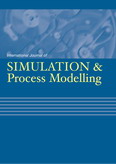
Process mining analysis to enhance systematic workflow of an IT company (2022)
Title : Process mining analysis to enhance systematic workflow of an IT company
Researcher : Porouhan, P.
Department : Graduate School of Information Technology, Siam University, Bangkok, Thailand
E-mail :
Link to article: International Journal of Simulation and Process Modelling, 2022, 19(3-4), pp. 148–181. https://doi.org/10.1504/IJSPM.2022.131561
Publication: International Journal of Simulation and Process Modelling / in Scopus
Bibliography : Porouhan, P. (2022). Process mining analysis to enhance systematic workflow of an IT company. International Journal of Simulation and Process Modelling, 19(3-4), 148–181. https://doi.org/10.1504/IJSPM.2022.131561
ฐานข้อมูลงานวิจัย มหาวิทยาลัยสยาม : –
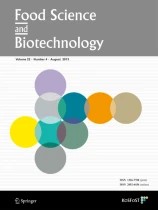
Properties and bioavailability assessment of shrimp astaxanthin loaded liposomes (2019)
Title : Properties and bioavailability assessment of shrimp astaxanthin loaded liposomes
Researcher : Sangsuriyawong, A., Limpawattana, M., Siriwan, D., Klaypradit, W.
Department : สำนักอธิการบดี มหาวิทยาลัยสยาม
E-mail : maruj.lim@siam.edu
ฐานข้อมูลงานวิจัย มหาวิทยาลัยสยาม : –
Link to article: Food Science and Biotechnology, 2019, 28(2), pp. 529–537.
Journal : Food Science and Biotechnology / in Scopus
Bibliography :
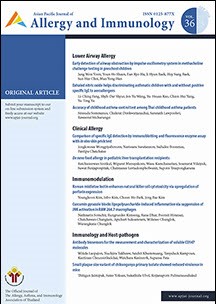
Reference value of Forced Oscillation Technique for healthy preschool children (2021)
Title : Reference value of Forced Oscillation Technique for healthy preschool children
Researcher : Clin.Prof.Suwat Benjaponpitak
Department : Faculty of Medicine, Siam University, Bangkok, Thailand
E-mail : med@siam.edu
Abstract : Background: The reference values of Forced Oscillation Technique (FOT) parameters of the inspiratory and expiratory phase for preschool children have not yet been established.
Objective: To evaluate FOT measures in Thai healthy preschool children.
Methods: Preschool children, aged 3-6 years, were screened. Children who were positive for the International Study of Asthma and Allergies in Childhood (ISAAC) questionnaire for asthma, positive family history of allergic diseases, recent lower respiratory tract infections, and environmental tobacco smoke were excluded. FOT parameters, including resistance (Rrs), reactance (Xrs), frequency of resonance (Fres) and area of reactance (ALX), were measured.
Results: A total of 390 healthy children with the mean age of 5.1 ± 0.9 years were enrolled. FOT was successfully performed in 378 children (96.9%). The mean (SD) for the whole breath (WB) resistance at 5Hz (R5), 20 Hz (R20) and R5-20 were 11.49 (2.69) cmH2O/L/s, 9.46 (2.19) cmH2O/L/s and 2.02 (0.82) cmH2O/L/s, respectively. The median (IQR) for WB reactance at 5Hx (X5), Fres and ALX were -1.51 (-2.37 to -0.96) cmH2O/L/s, 11.17 (8.50-15.65) Hz, and 7.53 (3.72-14.32) cmH2O/L/s, respectively. Significantly difference in WB R5, R20, X5, Fres and ALX between male and female children were demonstrated. The expiratory phase R5, R20, R5-20 were significantly higher than those of the inspiratory phase (p < 0.001). There are significant correlations between the height and FOT parameters. Reference curve for the FOT parameters was generated based on height using the lambda-mu-sigma (LMS) method.
Conclusion: Reference curve of FOT parameters measured in healthy preschool children were demonstrated. Majority of preschool children could perform FOT method.
Key words: Respiratory resistance, Respiratory reactance, LMS method, Frequency of resonance, Area of reactance
Link to article : Asian Pacific Journal of Allergy and Immunology, 2021, 39(2), pp. 89–95. DOI: 10.12932/AP-110618-0334
Journal : Asian Pacific journal of allergy and immunology / in Scopus
Bibliography : Mukdjindapa, P., Manuyakorn, W., Kiewngam, P., Sasisakulporn, C., Pongchaikul, P., Kamchaisatian, W., & Benjaponpitak, S. (2021). Reference value of Forced Oscillation Technique for healthy preschool children. Asian Pac J Allergy Immunol, 39(2), 89–95. doi: 10.12932/AP-110618-0334. Epub ahead of print. PMID: 30525741.
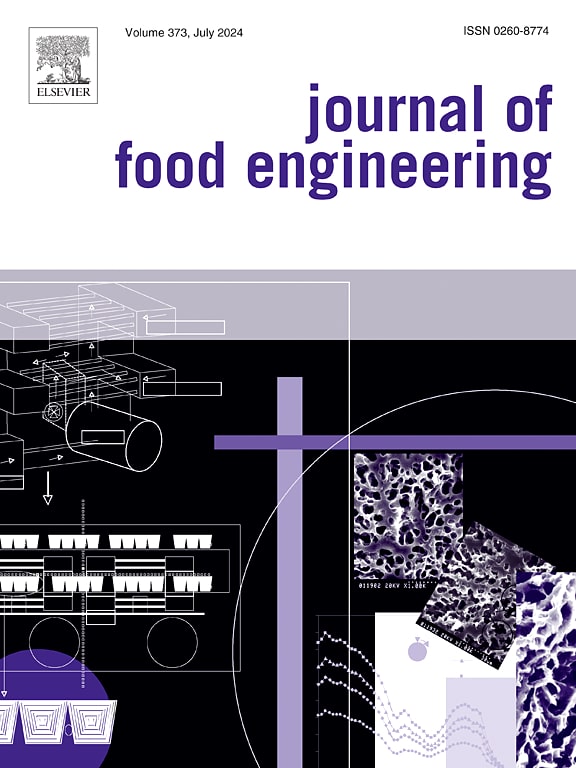
Role of solids composition on α-relaxation behavior, molecular structure and stability of spray-dried xanthones encapsulation systems around glass transition (2016)
Title : Role of solids composition on α-relaxation behavior, molecular structure and stability of spray-dried xanthones encapsulation systems around glass transition
Researcher : Tunyaporn Sirilert, Nattapol Kajonboon and Nattiga Silalai *
Department : ภาควิชาเทคโนโลยีการอาหาร คณะวิทยาศาสตร์ มหาวิทยาลัยสยาม
E-mail : *ผู้ประสานงานหลัก: tunyapornfood@gmail.com
ฐานข้อมูลงานวิจัย มหาวิทยาลัยสยาม : –
Link to article: Journal of Food Engineering Volume 174, April 2016, Pages 85-91 https://doi.org/10.1016/j.jfoodeng.2015.11.022
Journal : Journal of Food Engineering / in Scopus
Bibliography : Silalai, N., Sirilert, T., Roos, Y. H., Potes, N., & Devahastin, S. (2016). Role of solids composition on α-relaxation behavior, molecular structure and stability of spray-dried xanthones encapsulation systems around glass transition. Journal of Food Engineering, 174, 85-91. https://doi.org/10.1016/j.jfoodeng.2015.11.022
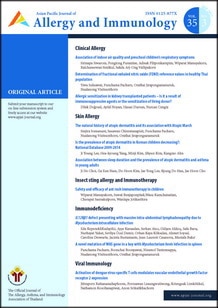
Safety and efficacy of ant rush immunotherapy in children (2017)
Title : Safety and efficacy of ant rush immunotherapy in children
Researcher : Clin.Prof.Suwat Benjaponpitak
Department : Faculty of Medicine, Siam University, Bangkok, Thailand
E-mail : med@siam.edu
Abstract : Background: The Rush Immunotherapy (RIT) protocol is a valid alternative in order to reach the maintenance phase early. However, there are scarce studies in the literature that have evaluated the safety and the efficacy of an ant RIT process in children.
Objective: To evaluate the safety and the efficacy of an ant RIT protocol and to identify the risk factors for systemic reactions (SRs) during an RIT procedure in children.
Method: A retrospective review was conducted for those children who were receiving an ant RIT procedure. The 3-day RIT protocol consisted of hourly subcutaneous injections in order to achieve a 0.5 ml maintenance dose of a 1:100 weight/ volume (wt/vol) of the Solenopsis invicta whole body extract. The safety for an RIT procedure was monitored by using the World Allergy Organization Subcutaneous Immunology Systemic Reaction Grading System. The efficacy was assessed by the reactions after a field ant re-sting.
Result: A total of 20 children who were receiving an ant RIT therapy were reviewed. The mean age was 9.5±3.07 years. There were 6 systemic reactions (SRs) from 324 injections during the RIT procedure (1.85%). All of the systemic reactions were Grade 1-2. There were no associations of SRs regarding age, gender, an atopic history, or the levels of immunoglobulin E (IgE) sensitization to the ants. Among the 14 patients who experienced a field ant re-sting, 4 (28.5%) patients developed Grade 3 SRs. These Grade 3 reactions were resolved after an increase of the maintenance dose to 0.5 ml of a 1:50 wt/vol. There was a significant difference in the mean age of those children who had ant re-sting systemic reactions and those who had no reactions (6.75±0.95 year vs. 10.8±3.29, p=0.036).
Conclusion: Rush immunotherapy with ant in children is safe and it has a low occurrence of severe systemic reactions. It is an alternative treatment for those patients requiring a rapid protection.
Link to Academic article: DOI: 10.12932/AP0831
Journal : Asian Pacific journal of allergy and immunology Vol. 35 No. 3 September 2017
Bibliography : Manuyakorn, W., Benjaponpitak, S., Kamchaisatian, W., Sasisakulporn, C., & Jotikasthira, W. (2017, September). Safety and efficacy of ant rush immunotherapy in children. Asian Pac J Allergy Immunol, 35(3), 156-160. doi: 10.12932/AP0831. PMID: 27996286.

Skin Prick Test Versus Phadiatop as a Tool for Diagnosis of Allergic Rhinitis in Children (2021)
Title : Skin Prick Test Versus Phadiatop as a Tool for Diagnosis of Allergic Rhinitis in Children
Researcher : Clin.Prof.Suwat Benjaponpitak
Department : Faculty of Medicine, Siam University, Bangkok, Thailand
E-mail : med@siam.edu
Abstract : Background: Skin prick test (SPT) or Phadiatop, a multi-allergen IgE screening test, was used as a tool for detecting aeroallergen sensitization.
Objective: To compare SPT and Phadiatop as a tool for diagnosis allergic rhinitis (AR) using the nasal provocation test (NPT) as a comparative standard.
Methods: Children aged 5-18 years with rhinitis symptoms more than 6 times in the past year were enrolled. SPT to 13 common aeroallergens, serum for Phadiatop, and NPT to Dermatophagoides pteronyssinus (Der p) were performed. NPT to mixed cockroach (CR) were performed in children who had CR sensitization and negative NPT to Der p. Children who had a disagreement between the result of SPT and Phadiatop or having negative results were evaluated for specific IgE (sIgE) to common aeroallergens.
Results: One hundred-forty children were enrolled with the mean age of 9.8 ± 3 years, 56% were male. Of 92 children (65.7%) with positive SPT to any aeroallergens, 88 children (95.6%) were sensitized to house dust mite (HDM). NPT showed positive results in 97 children (69.3%). Of 48 children who showed negative SPT, 4 children (8.3%) had sIgE to aeroallergens but NPT was positive in 1 child. Eighty-eight children (62.9%) had positive tests for Phadiatop and 4 (4.5%) of them had negative results for NPT to Der p. Among 52 children who had negative results for Phadiatop, 4 children (7.6%) had sIgE to aeroallergens but NPT was positive in 2 children (3.8%). SPT and Phadiatop showed 94.2% agreement: with Kappa 0.876, p < 0.001. Using NPT as a comparative standard for diagnosis for AR, SPT showed a sensitivity of 89.6% and specificity of 88.3% and Phadiatop provided the sensitivity of 88.6% and specificity of 95.3%.
Conclusions: SPT to aeroallergen and Phadiatop have good and comparable sensitivity and specificity for the diagnosis of AR in children.
Keywords: IgE; Phadiatop; aeroallergen; children; cockroach allergic; dust mite; nasal provocation test; rhinitis; skin prick test.
Link to Academic article: DOI: 10.1177/1945892420938300
Journal : American Journal of Rhinology & Allergy Volume 35 Issue 1, January 2021
Bibliography : Traiyan, S., Manuyakorn, W., Kanchongkittiphon, W., Sasisakulporn, C., Jotikasthira, W., Kiewngam, P., Kamchaisatian, W., & Benjaponpitak, S. (2021, January). Skin Prick Test Versus Phadiatop as a Tool for Diagnosis of Allergic Rhinitis in Children. Am J Rhinol Allergy, 35(1), 98-106. doi: 10.1177/1945892420938300. Epub 2020 Jun 27. PMID: 32597210.

Special Interest Tourism
Title : Special Interest Tourism
Authors : Bongkosh N. Rittichainuwat
Department : Service Industry Management, Siam University, Bangkok, Thailand
E-mail : Bongkosh N. Rittichainuwat ngamson@gmail.com
Description : This research-based textbook covers 15 chapters on food, film, shopping, medical, ghost, and suicide tourism, based on research conducted over 15 years on tourists from East Asia and Southeast Asia, the UK, the USA, Australia, Germany, and New Zealand. It introduces students, researchers, educators, tourist bureaus, and tour operators to the demands of affluent tourists from the newly industrialized countries of East Asia and Southeast Asia.
Link to E-book: Special Interest Tourism
Bibliography : Rittichainuwat, B. N. (2018). Special Interest Tourism (3rd ed.). Newcastle upon Tyne, UK: Cambridge Scholars Publishing.
Author details in Scopus: Rittichainuwat, Bongkosh Ngamsom
Google Scholar Citations: https://scholar.google.com/citations?user=ifUlKJoAAAAJ&hl=en